Iran: Why you need to visit now

Recently dubbed the 'must-visit' holiday destination of the moment, Iran serves up fascinating cities, a history of empire dating back to 1000 BC and legendary architecture that astounds visitors. The country has received its fair share of negative press, but a new era promises to surprise and enlighten travellers thanks to the warm hospitality of its people, an array of lavish historical sites and vibrant cuisine.
SEE ALSO: Is Iran the top holiday destination for 2016?
SEE ALSO: World's weirdest travel experiences
Now that British Airways has reintroduced its London to Tehran route for the first time since 2012 following the relaxation of sanctions, Iran is ready to be rediscovered by discerning travellers who seek rich, ancient culture, modern cities filled with UNESCO World Heritage Sites and a fabulous social scene.
We were one of the first to travel to the Middle Eastern country with BA to discover the delights of a misunderstood holiday location, ready to delve into its world of bustling bazaars and ornate palaces.
After flying Club World on a six-hour night flight and resting up on the fully flat beds while feasting on a three-course meal and watching a movie on our large flat screen, we arrived in Iran's capital eager to explore the sprawling city backed by the towering Alborz Mountains in the north and the vast desert to the south.
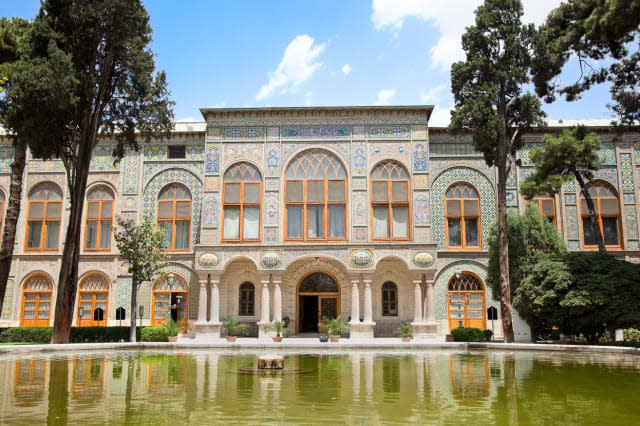
The first stop was Golestan Palace, which the guide books tell you to visit for a reason. This oasis, a complex consisting of lavish buildings, is one of the oldest monuments in Tehran and a former main residence of the Qajar family, which came into power in 1779. Set around a manicured garden with pools, the palace features a spectacular terrace known as Takht-e Marmar (Marble Throne), the Hall of Mirror and a resplendent Reception Hall, which hosted celebrations in the presence of the king.
Leave the peace and tranquillity of palace life behind and head for Tehran's buzzing Grand Bazaar which rivals the likes of Istanbul and Marrakech's markets. The historical bazaar is a dizzying destination for bargain hunters who wish to pick up anything from Persian carpets to Gaz (Iranian nougat). Everything you can imagine is for sale and if you're just browsing, it's the perfect place to soak up the lively atmosphere of an Iranian market.
A few minutes' drive away is one of the most captivating places in the city: the Treasury of National Jewels. Housed within the Central Bank of the Islamic Republic of Iran, this magnificent collection of dazzling jewels will amaze you. Containing some of the most unique gems in the world, mostly sourced from Europe and India, it has been impossible to put a price on the one-of-a-kind collection. Here, you can gawp at the Iranian Crown Jewels, getting up close to crowns, tiaras and hoards of ruby, turquoise and emerald, as well as the Darya-ye-Nur - the largest pink diamond and one of the rarest in the world.
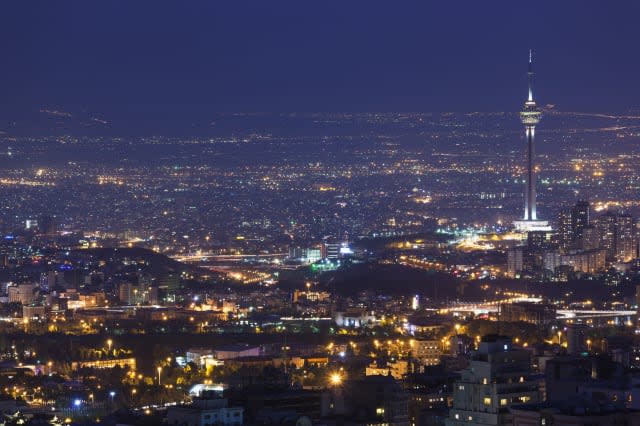
In the evening, the Milad Tower is an excellent place for its lively atmosphere: take a ride up one of the world's tallest towers and marvel at the epic views of Tehran twinkling after dark. Likewise, Azadi Square and its iconic Azadi Tower should be on your hit list for the Insta-worthy architecture and modern design from architect Hossein Amanat.
To stay in the thick of it all, Howeyzeh Hotel (from £79 per night) makes for a great base and is close to the delightful Honarmandan Park where you can enjoy a leisurely stroll or stop for Persian tea and chocolate cake on the lovely indoor-outdoor terrace at the Iranian Artist's Forum's cafe. If you prefer five-star mountain views, check into the luxurious Parsian Azadi Hotel (from £174 per night), located in northern Tehran at the foot of the Alborz Mountains, which has hosted presidents and other famous figures.
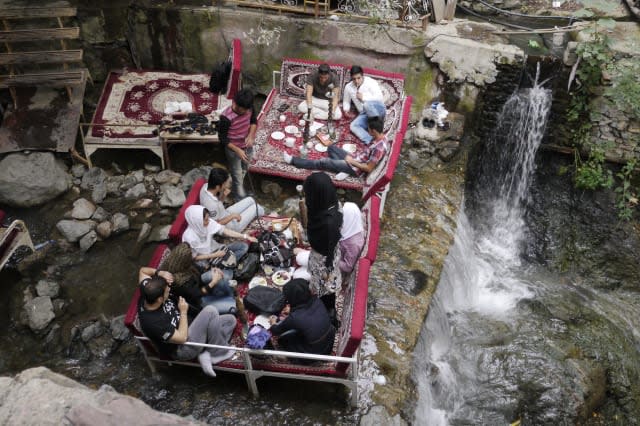
The north of Tehran offers just as many sites as the southern neighbourhoods and your first stop should be the mountain village of Darband, which is a stark contrast to the centre and invites you to escape to a more relaxed part of the city, where Tehranis often come to socialise and dine in the evening. A popular place for hikers, Darband is at the start of a walking trail into the Mount Tochal which passes waterfalls and streams with tasty treats to purchase along the way, including lavashak (Persian fruit roll) and pickled walnuts.
Just moments away is the remarkable Sa'dabad Complex, where you can easily spend a day exploring the 110-hectare museum complex built by the Qajar and Pahlavi rulers and used as a summer residence. There are 18 buildings dedicated to fine arts, royal cars and even tableware. Some of its highlights include the White Palace, which was the summer home of Mohammad Reza Pahlavi and his glamorous wife Farah, as well as the Green Palace, one of the most beautiful palaces in Iran with its opulent mirror room and 70-square-metre silk Mashhad carpet.
Just as impressive is the nearby Niavaran Palace, the residence of Mohammad Reza Shah and his family, which allows visitors to see inside Farah Diba's make-up room and browse Mohammad Reza's military uniforms and medals. For post-palace shopping, stop at the traditional Tajrish Bazaar to enjoy a very local experience, picking up nuts, T-shirts and spices as you take in the sights and sounds.

As Iranian cuisine is one of the best in the world, you won't want to pass up eating in Tehran's best restaurants. Gilar Restaurant provides an authentic setting and serves up delicious dishes, such as perfectly grilled fish and kashke bademjan (aubergine dip), washed down with refreshing khakshir. At Daf Traditional Restaurant, you can feast on hearty stew Abgoosht, made with lamb, chickpeas, white beans, potatoes and tomatoes, before sipping a glass of doogh, the typical Iranian yoghurt drink. Meanwhile, Farahzad Abshar Restaurant offers a traditional experience of dining on carpets in a pretty garden setting.
A trip to Iran isn't complete without a visit to the country's second city, Isfahan. Many argue that this graceful city is Iran's most beautiful thanks to its plethora of architectural treasures, including mosques, palaces and minarets, along with its gorgeous boulevards and historical bridges.
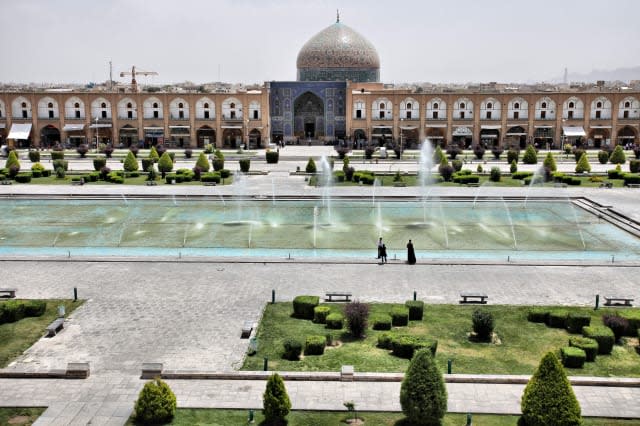
The UNESCO-protected Naghsh-e Jahan Square is unlike any other square in the world, constructed between 1598 and 1629, and featuring the magnificent Shah Mosque, the mind-blowing Sheikh Lotf Allah Mosque, the super-indulgent Ali Qapu Palace and the mesmerising Grand Bazaar as its four monuments. The immense square is 512m long and 163m wide, and has not changed much since it was built. A few minutes' walk from the square is Chehel Sotoun, a pavilion in the middle of a lush park with a long pool that was built by Shah Abbas II as a reception hall. Aside from the splendid wooden ceiling of its talar terrace and the outstanding frescoes, the palace garden is a highlight and a fine example of a Persian garden.
Isfahan's Armenian quarter Jolfa is a fabulous neighbourhood for a stroll through one of the largest Armenian quarters in the world. Dating back to 1606 when it was established by the Safavid dynasty, it is home to the amazing Vank Cathedral, with its elaborate frescos, carvings and tile work. The Vank Museum, opposite, houses priceless objects from the Armenian community in Isfahan, such as the 1606 edict of Shah Abbas I establishing New Jolfa and prohibiting the interference or persecution of Armenians and their property. Once you've soaked up the history, Ark Cafe, just outside, is the perfect place to take in the modern culture of the locals who come here to socialise over a spot of tea.

Eating out in Isfahan is as exciting as in Tehran. The unusual Jarchi Bashi Restaurant, housed in a former bathhouse from the Safavid era, boasts an attractive interior inspired by its surroundings and serves delectable Iranian specialties such as yoghurt stew, lamb kebab and kashke bademjan. Zagros Restaurant, located in the mountainside above the Soffeh Expressway, affords the most spectacular view of Isfahan at night while offering diners traditional and international dishes, including Shirazi salad and grilled chicken.
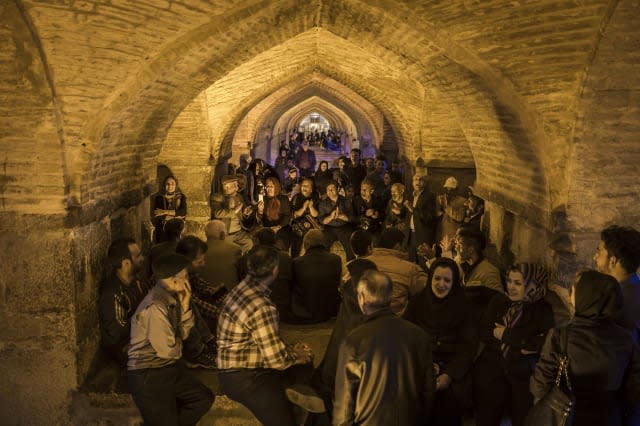
With the Zayande River flowing through the heart of the city, Isfahan's eleven bridges are some of the finest examples of the city's architecture and provide a superb setting for witnessing the nightlife and social scene. At night, the bridges are lit and attract locals who come to sing, walk and enjoy the lively ambience. The Khaju Bridge, often described as the most stunning of all the bridges, was built around 1650 and features 24 arches with a pavilion at its centre that was once used by rulers and the royal family. Si-o-seh pol, the longest bridge that consists of two rows of 33 arches, is considered one of Iran's greatest building endeavours on water. To be close to life along the bridges, stay opposite Si-o-seh pol at the Kowsar Hotel (from £63 per night), which features rooms with balconies overlooking the river.
Get there:British Airways is the only airline that flies direct from London to Tehran six days a week. Return fares from Heathrow to Imam Khomeini start from £535 in World Traveller, £938 in World Traveller Plus and £2,198 in Club World.




